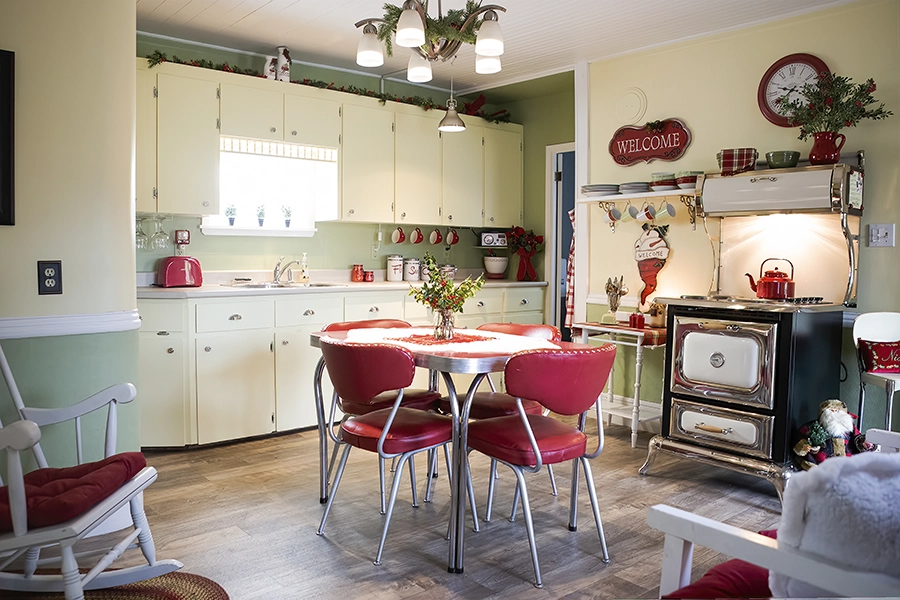Embrace your tiny garden plot by creating a focal point and using the right plants and flowers.
When you are gardening in a tiny space, it can be tempting to envy larger, more expansive plots. While big gardens are beautiful, they are also time-consuming, expensive and require back-breaking work. The grass might look greener but there’s also much more of it to mow.
There are several elements that can make a small garden beautiful but proportion and design are the most important. To begin, your garden will need a focal point. This can be anything from a patio set or a large planted pot to a statue, a fountain or whatever else suits your fancy. It should be the first thing that catches your attention when you enter or see the garden, deflecting attention away from the small size of the space.
Every space has potential and a small space will take less time, effort and money to make the most of it. Measure your space and draw a plan. List what you like about it and what you want to keep or get rid of, including trees, plants, buildings and walkways. Think about what you’d like to add to the space. Also note where and when you have sun or shade, if there are any particularly wet or dry spots, and is the space flat or on a grade. Don’t forget to note the location of electrical wires and underground pipes.

Arranging planters on steps and using climbing vines will create depth and visual interest in a tight space. Photo by Denise Adams
When planning your design, take advantage of the views the space offers. Even though a beautiful maple tree might belong to your neighbour, it will still form a background for your garden. If a fence or wall is your view, find out if you can paint it or plant something to climb it. If that’s not possible, you still have options for making it disappear. You can erect a free-standing lattice-filled wall or background and plant a climbing vine that will enhance it. You can then make a focal point with a pot, statue, fountain, plant or shrub that will draw the eye away from the original fence or wall.
Plants are visible all at once in a small garden, so they should be in harmony. This does not mean they should be all the same type. Use subtlety by choosing similar colours but in a variety of textures, shapes and heights. Choose a calming colour scheme in cool colours—green, blue, pink, white and mauve—and repeat in everything, including leaves, flowers, walls and pots. These colours will recede, helping you relax in the space.
You can actually create more space than you see by incorporating raised or terraced beds, window boxes and climbing plants. As my dad used to say, “I don’t own much square footage on the ground but I own a long way up.” Don’t think of your garden space at just ground level—climbing plants are a staple of small gardens.
If you want full coverage of an object or wall use Virginia creeper (Parthenocissus quinquefolia) or English (Hedera helix) or Boston ivy (Parthenocissus tricuspidata ‘Green showers’) or a combination of them all. These vines are also good for providing shade if you have full sun. Vines that grow well in shade are climbing hydrangea (Hydrangea anomala ‘Petiolaris’) and silver lace vine (Polygonum auberteii). The latter is aggressive, which can be good or bad depending on your needs. If you have shade at ground level but sun higher up, you have the perfect home for clematis.
Don’t be afraid of using trees in all but the smallest of gardens; even then, you can use potted trees you bring inside for the winter. Choose trees such as crabapple (Malus), serviceberry (Amelanchier canadensis), and mountain ash (Sorbus) which offer flowers, fruit and fall colour along with slender lines and structural elegance. Suggested conifers include yew (Taxus), which takes readily to pruning to keep it under control, blue cloak white fir (Abies concolor) and Korean fir (Abies Koreana). The fir trees offer plenty of beauty and texture for the space they use.
If you are fortunate to have some shade, remember that ferns and hostas come in numerous shapes and sizes, offering airy volume without taking up a lot of space. Hostas, especially, grow well in pots. If you are on a sun-baked balcony, try ornamental grasses, white or pink geraniums, alyssum, rosemary, lavender or sage. Place them in extra-large pots to keep them from drying out.
Pots and containers are great for small gardens because they can easily create height variations. The same plants in different-sized pots move your eye up and down. Place the pots in the corners, intermittently along walkways or near focal points, rather than all together. This will provide additional flow in your garden.

Create a focal point in your garden with a simple patio chair or a large colourful planter. This catches your attention immediately, deflecting the focus away from the small size of the garden. Photo by Denise Adams.
Another benefit of gardening in a small space is that everything is close by: the scent of the flowers, the sound of the water and the texture of the leaves. Make sure you incorporate a seating area of some type so you can enjoy these sensations. Experiencing all these elements also gives the illusion of space.
With that in mind, consider creating a trompe l’oeil if you have a wall or structure that you can paint. This is an art technique involving realistic imagery in order to create the optical illusion of reality. Often used in interior decorating, it can be useful for small gardens, too. Perhaps what you’ve always wanted is a home on a lake. That lake can be your illusion with the help of an artist.
Finally, the success of small gardens is in the details. A dead plant in a back border of a large garden becomes a focal point in a small one. An overgrown shrub can block a walkway and any mess is all the more noticeable in a tight space. These are small problems that you can handle quickly and economically in your garden. Carefully tending to every aspect of your garden will transform the tiny space into a special haven for you and your visitors.



















